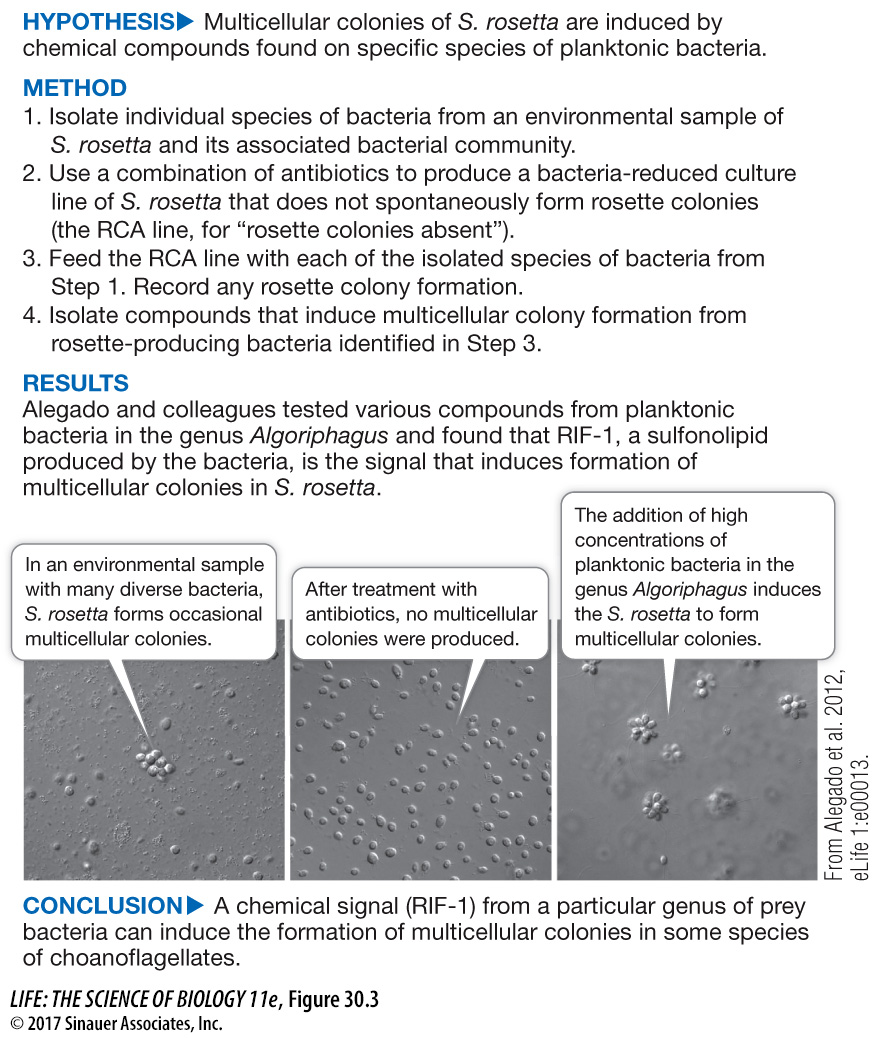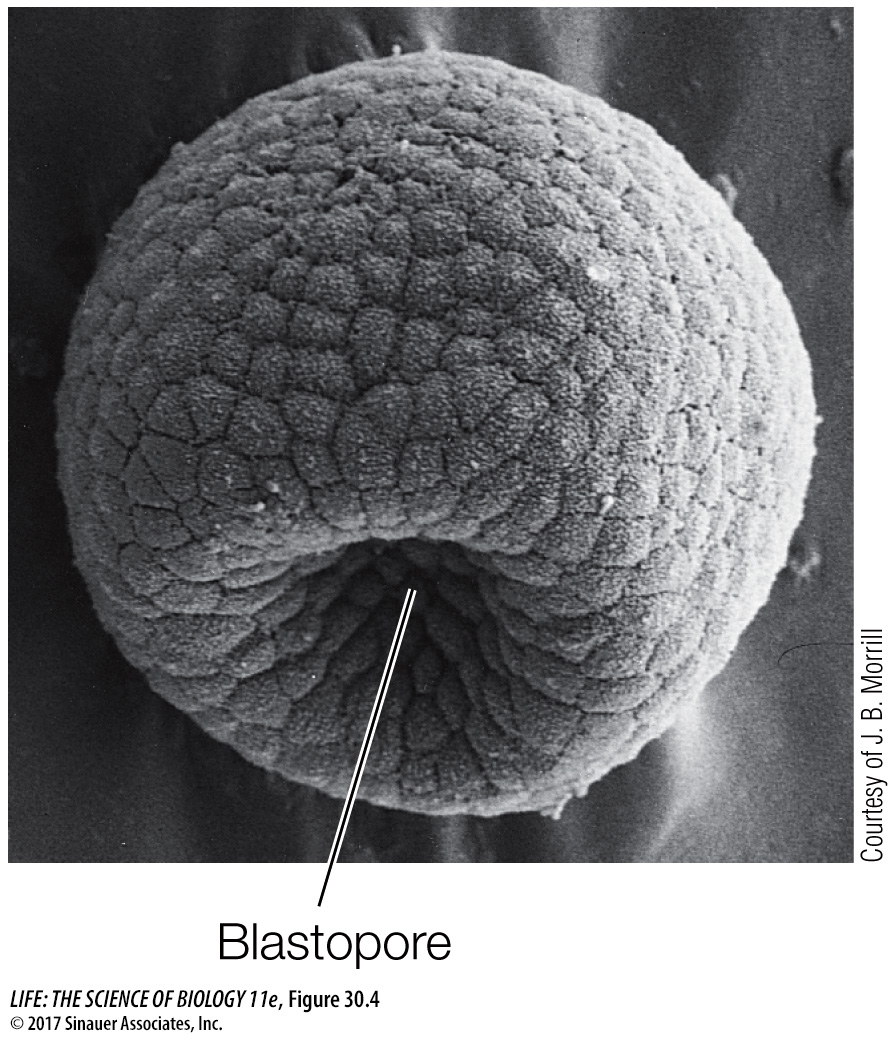A few basic developmental patterns differentiate major animal groups
Differences in patterns of embryonic development have until recently provided many of the important clues to animal phylogeny. Analyses of gene sequences, however, are now showing that some developmental patterns are more evolutionarily variable than previously thought. Here we describe the basic developmental patterns that vary among the major animal clades.
The early cell divisions of an embryo are known as *cleavage. Several different patterns of cleavage exist among animals. Although these patterns can be useful for characterizing major animal groups, genomic analyses have shown that many changes have occurred in cleavage patterns throughout animal evolution.
*connect the concepts The various patterns of embryonic cleavage and animal development are described in more detail in Key Concept 43.1.
experiment
Figure 30.3 What Induces Choanoflagellates to Form Multicellular Colonies?
Original Paper: Alegado, R. A. et al. 2012. A bacterial sulfonolipid triggers multicellular development in the closest living relatives of animals. eLife 1: e00013.
The choanoflagellate Salpingoeca rosetta forms multicellular, rose-

Cleavage patterns are influenced by the configuration of the yolk, the acellular nutritive material that nourishes the growing embryo. The eggs of many animal groups contain a small amount of yolk that is evenly distributed throughout the egg cytoplasm. In some of these groups, the zygote and its descendant cells divide completely and evenly in a pattern known as radial cleavage. Radial cleavage is thought to be the ancestral condition for the bilaterian animals, as it is widely distributed among the major lineages. Spiral cleavage—a complicated permutation of radial cleavage—
Distinct layers of cells form during the early development of most animals. These cell layers differentiate into specific organs and organ systems as development continues. The embryos of diploblastic animals have two cell layers: an outer ectoderm and an inner endoderm. Embryos of triploblastic animals have, in addition to ectoderm and endoderm, a third distinct cell layer, mesoderm, which lies between the ectoderm and the endoderm (see Figure 43.6). The existence of three cell layers in embryos is a synapomorphy of the triploblastic animals (which form a clade), whereas the diploblastic animals (ctenophores, placozoans, and cnidarians, which are not a clade) exhibit the ancestral condition (see Figure 30.1). Some biologists also consider sponges to be diploblastic, but since they do not have clearly differentiated tissue types or embryonic cell layers, they are usually considered to be monoblastic.
During early development in many animals, in a process known as gastrulation, a hollow ball one cell thick indents to form a cup-

In the protostomes (Greek, “mouth first”), the mouth arises from the blastopore, and the anus forms later.
In the deuterostomes (“mouth second”), the blastopore becomes the anus, and the mouth forms later.
Although the developmental patterns of animals are more varied than suggested by this simple dichotomy, sequencing data indicate that the protostomes and deuterostomes represent distinct animal clades. Together these two groups are known as the bilaterians (named for their usual bilateral symmetry), and they account for the vast majority of animal species.